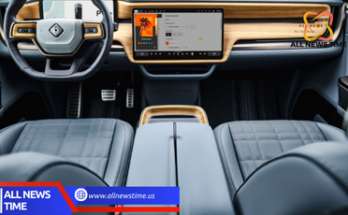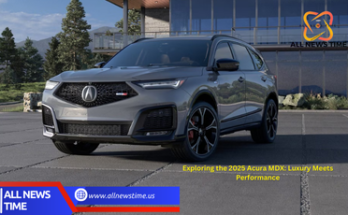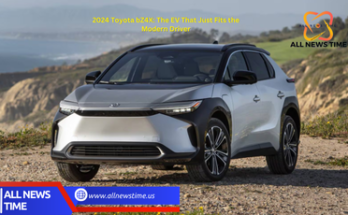The First All-Electric Mercedes Van
Introduction
- Overview of the 2024 Mercedes-Benz eSprinter: Introduction to the eSprinter as the first all-electric van from Mercedes-Benz, highlighting its significance in the automotive market and its role in the company’s electric vehicle strategy.
- The Evolution of Commercial Vans: Brief history of commercial vans, leading up to the introduction of electric models, and how the eSprinter represents a new era for Mercedes-Benz.
- Purpose of the Article: An in-depth exploration of the 2024 eSprinter, covering its design, performance, technology, and impact on the commercial vehicle market.
Exterior Design: Modern, Practical, and Aerodynamic
Design Philosophy and Aesthetic Appeal
- Mercedes-Benz Design Language: Analysis of how the eSprinter incorporates the brand’s design language while adapting it for a commercial vehicle.
- Practicality and Functionality: Discussion on the exterior design elements that enhance the van’s practicality, such as its cargo space, accessibility, and loading features.
- Aerodynamic Efficiency: Examination of the aerodynamic enhancements made to the eSprinter, including its shape, materials, and design choices that improve energy efficiency.
Customization and Variants
- Available Configurations: Overview of the different configurations and body styles available for the eSprinter, such as panel van, chassis cab, and crew van.
- Color and Trim Options: Discussion on the exterior color choices and trim levels, including any special editions or packages.
- Branding and Customization: Exploration of the options for fleet branding and customization, highlighting the van’s adaptability for various business needs.
Interior Design: Comfort and Technology for Professional Use
Cabin Layout and Driver Comfort
- Driver-Centric Interior: Analysis of the interior layout, focusing on the driver’s comfort, visibility, and control accessibility.
- Material Quality and Durability: Examination of the materials used in the cabin, emphasizing their durability and ease of maintenance in a commercial setting.
- Ergonomics and Storage Solutions: Discussion on the ergonomic design of the seating and storage solutions, including how they cater to long hours on the road.
Technology and Connectivity
- Infotainment and Navigation Systems: In-depth look at the eSprinter’s infotainment system, including the integration of MBUX (Mercedes-Benz User Experience) technology, touchscreen interface, and connectivity options.
- Fleet Management and Telematics: Overview of the advanced fleet management and telematics systems available, and how they help businesses optimize their operations.
- Driver Assistance and Safety Features: Detailed discussion on the safety and driver assistance technologies included in the eSprinter, such as adaptive cruise control, lane-keeping assist, and emergency braking.
Performance: Electric Power for a New Era of Mobility
Electric Motor and Powertrain
- Electric Motor Specifications: Detailed analysis of the eSprinter’s electric motor, including power output, torque, and performance metrics.
- Battery Technology: Overview of the battery options available, including capacity, charging times, and range.
- Performance and Driving Dynamics: Discussion on how the eSprinter’s electric powertrain affects its driving dynamics, such as acceleration, handling, and load capacity.
Range and Efficiency
- Range Capabilities: Examination of the eSprinter’s range on a full charge, considering different driving conditions, load weights, and use cases.
- Energy Efficiency and Consumption: Analysis of the van’s energy efficiency, including factors that influence consumption, such as driving style and climate control use.
- Charging Infrastructure: Overview of the charging options available for the eSprinter, including home charging, public charging stations, and fleet-specific solutions.
Cargo and Utility: Meeting the Demands of Commercial Use
Cargo Space and Payload
- Cargo Capacity: Detailed look at the eSprinter’s cargo space, including dimensions, volume, and how it compares to traditional Sprinter models.
- Payload Capabilities: Discussion on the van’s payload capacity, considering the impact of the electric powertrain on weight distribution and load-carrying ability.
- Customization for Specific Industries: Exploration of the customization options available for different industries, such as delivery, construction, and passenger transport.
Loading and Accessibility
- Loading Features: Examination of the loading and unloading features, such as rear doors, sliding side doors, and step-in height.
- Accessibility and Ease of Use: Discussion on the van’s accessibility for drivers and workers, including the design of the loading area and interior layout.
- Integration of Technology: Overview of how technology is integrated into the cargo area, such as lighting, power outlets, and security features.
Environmental Impact and Sustainability
Emissions and Energy Use
- Zero Emissions: Discussion on the environmental benefits of the eSprinter, including its zero tailpipe emissions and contribution to reducing urban pollution.
- Energy Efficiency and Carbon Footprint: Analysis of the van’s overall carbon footprint, considering factors such as manufacturing, energy sources, and lifecycle emissions.
- Sustainability Initiatives: Overview of Mercedes-Benz’s broader sustainability efforts, including the use of recycled materials, green manufacturing processes, and future goals.
Market Impact and Industry Trends
- Impact on the Commercial Vehicle Market: Examination of how the eSprinter is influencing the commercial vehicle market, including its role in the shift towards electric mobility.
- Competitor Analysis: Comparison of the eSprinter with other electric vans on the market, such as the Ford E-Transit, Rivian Electric Van, and Volkswagen e-Crafter.
- Future Trends in Electric Commercial Vehicles: Discussion on emerging trends in the electric commercial vehicle market and how the eSprinter fits into these trends.
Market Positioning and Business Use Cases
Target Audience and Market Segmentation
- Business and Fleet Customers: Identification of the primary market for the eSprinter, focusing on businesses, fleet operators, and government agencies.
- Unique Selling Points: Analysis of the eSprinter’s unique selling points, such as its electric powertrain, Mercedes-Benz brand reputation, and advanced technology.
- Market Segmentation: Overview of how the eSprinter is positioned within the commercial vehicle market, considering different industries and use cases.
Pricing and Total Cost of Ownership
- Pricing Strategy: Examination of the eSprinter’s pricing relative to its features, performance, and competitors.
- Cost Savings and ROI: Discussion on the potential cost savings of owning an electric van, including lower fuel costs, reduced maintenance, and potential government incentives.
- Total Cost of Ownership: Analysis of the overall cost of ownership, including purchase price, operating costs, insurance, and depreciation.
Driving Experience: Behind the Wheel of the eSprinter
On the Road: Performance and Comfort
- Driving Dynamics: Detailed analysis of the eSprinter’s driving dynamics, including handling, ride comfort, and noise levels.
- Comfort and Ergonomics: Discussion on the comfort features available for the driver and passengers, such as seating, climate control, and noise insulation.
- Real-World Driving Experience: First-hand accounts of driving the eSprinter in various conditions, including city driving, highway cruising, and fully loaded scenarios.
Charging and Range Management
- Charging Experience: Overview of the charging process, including ease of use, charging times, and the availability of charging stations.
- Range Management: Discussion on how to manage the eSprinter’s range in real-world conditions, including tips for maximizing efficiency and minimizing downtime.
- Long-Distance Travel: Analysis of the eSprinter’s suitability for long-distance travel, including the availability of fast charging and the impact on business operations.
Conclusion
- Recap of Key Features: Summary of the main points discussed, highlighting the eSprinter’s strengths in design, performance, and sustainability.
- Final Verdict: Conclusion on whether the 2024 Mercedes-Benz eSprinter meets the needs of modern businesses and fleet operators looking for a reliable, efficient, and environmentally friendly commercial vehicle.
- Future Outlook: Speculation on the future of electric commercial vehicles and how the eSprinter might evolve to meet the demands of an increasingly electrified world.
This outline provides a comprehensive structure for developing a detailed, unique, and engaging article on the 2024 Mercedes-Benz eSprinter, focusing on its role as the first all-electric van from Mercedes-Benz and its impact on the commercial vehicle market.



